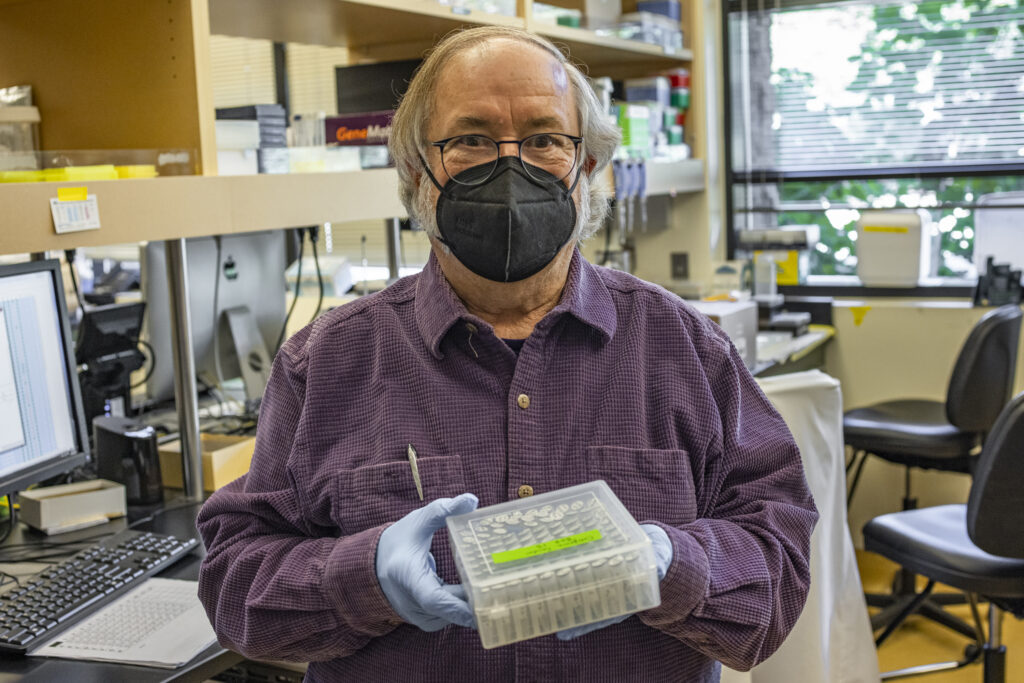Parthenogenesis, or asexual reproduction, is a very rare phenomenon. “Immaculate conception,” as we would call this condition in humans, occurred in California condors. It is a critically endangered species with the last 500 individuals left. Conservation scientists at the San Diego Zoo Wildlife Alliance last week announced the hatching of two young California condors from unfertilized eggs.
Parthenogenesis is very rare in birds
The study was published in the Journal of Heredity. Each condor cub was genetically related to the corresponding female condor. Neither pup was genetically related to the male, meaning that both pups were biologically without a father. These are the first two cases of asexual reproduction that have been confirmed in a type of condor in California.

“This is truly an amazing discovery,” said Oliver Ryder, Ph.D., Kleberg Endowed Director of Conservation Genetics at the San Diego Zoo Wildlife Alliance, who is co-author of the study. “We were not exactly looking for evidence of parthenogenesis, it just hit us in the face. We only confirmed it because of the normal genetic studies we do to prove parentage. Our results showed that both eggs possessed the expected male ZZ sex chromosomes, but all markers were only inherited from their dams, verifying our findings. ”
🚨BREAKING NEWS🚨
Scientists at SDZWA discovered two California condor chicks have hatched from unfertilized eggs. This sort of asexual reproduction, known as parthenogenesis, is a first for the species and provides new hope for their recovery. Read more: https://t.co/m5MZhqt21l pic.twitter.com/vRxGbKZy2S
— San Diego Zoo Wildlife Alliance (@sandiegozoo) October 28, 2021
The females had a fertile male next to them
Interestingly, the female condor had a fertile male available at all times. This is the first case of parthenogenesis in which a female bird had access to her partner.

“We believe that our findings represent the first instance of facultative avian parthenogenesis in a wild bird species, where both a male and a female are housed together,” said Cynthia Steiner, associate director for the conservation research division at San Diego Zoo Wildlife Alliance, and co-author of the study. “Still, unlike other examples of avian parthenogenesis, these two occurrences are not explained by the absence of a suitable male.”

California Condors are thoroughly researched
During parthenogenesis, the unfertilized embryo continues to develop and contains only genetic material from the mother. The California condor parthenotes were produced by two different dams, each of which was continuously housed with a fertile male. In the last century, parthenogenesis has been observed in turkeys, finches and domestic pigeons, for example. For the past 30 years, the population of California condors has been carefully studied. Scientists have historical genetic records from 911 condors. The records were carefully examined before the case of parthenognesia was confirmed.
“These findings now raise questions about whether this might occur undetected in other species,” Ryder said.
As California condors are only a small percentage of animals that are thoroughly studied, it is likely that parthenogenesis occurs in nature in other animal species as well.
Source:
https://academic.oup.com/jhered/advance-article/doi/10.1093/jhered/esab052/6412509
https://stories.sandiegozoo.org/2021/10/28/san-diego-zoo-wildlife-alliance-conservation-scientists-report-first-confirmed-hatchings-of-two-california-condor-chicks-from-unfertilized-eggs/















